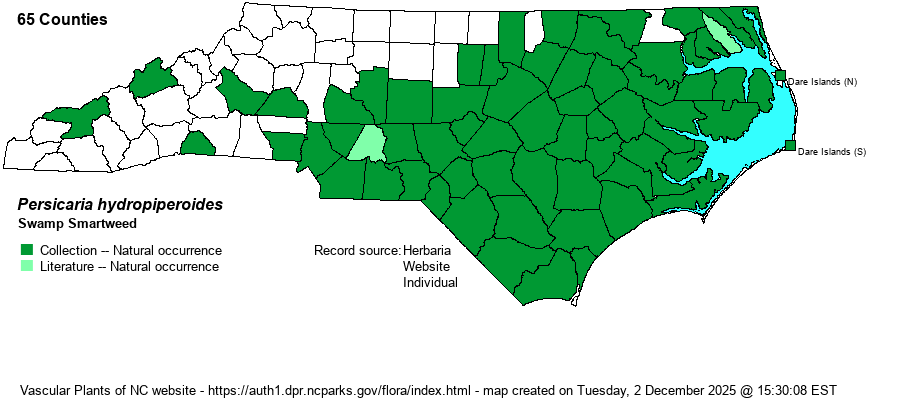| taxonName | relationship | relatedTaxonName | relatedTaxonRefText | relComments |
|---|
|
|
|
|
|
|
| Persicaria hydropiperoides | > | Polygonum hydropiperoides var. hydropiperoides | Gleason and Cronquist (1991) | |
| Persicaria hydropiperoides | > | Polygonum hydropiperoides var. hydropiperoides | Fernald (1950) | |
| Persicaria hydropiperoides | > | Polygonum hydropiperoides var. hydropiperoides | Radford, Ahles, and Bell (1968) | |
| Persicaria hydropiperoides | > | Polygonum hydropiperoides var. opelousanum | Gleason and Cronquist (1991) | |
| Persicaria hydropiperoides | > | Polygonum hydropiperoides var. opelousanum | Radford, Ahles, and Bell (1968) | |
| Persicaria hydropiperoides | > | Polygonum hydropiperoides | Godfrey and Wooten (1979, 1981) | |
| Persicaria hydropiperoides | > | Polygonum hydropiperoides | | |
| Persicaria hydropiperoides | = | Polygonum hydropiperoides | | |
| Persicaria hydropiperoides | = | Polygonum hydropiperoides | Wofford (1989) | |
| Persicaria hydropiperoides | = | Polygonum hydropiperoides | Wunderlin & Hansen Flora of Florida (3) | |
| Persicaria hydropiperoides | = | Polygonum hydropiperoides | Flora of West Virginia | |
| Persicaria hydropiperoides | = | Polygonum hydropiperoides | | |
| Persicaria hydropiperoides | > | Polygonum hydropiperoides var. breviciliatum | Fernald (1950) | |
| Persicaria hydropiperoides | > | Polygonum hydropiperoides var. euronotorum | Fernald (1950) | |
| Persicaria hydropiperoides | > | Persicaria hydropiperoides | Small (1933, 1938) | |
| Persicaria hydropiperoides | > | Persicaria hydropiperoides var. opelousana | | |
| Persicaria hydropiperoides | > | Polygonum opelousanum | Godfrey and Wooten (1979, 1981) | |
| Persicaria hydropiperoides | > | Polygonum opelousanum | | |
| Persicaria hydropiperoides | > | Polygonum opelousanum var. opelousanum | Fernald (1950) | |
| Persicaria hydropiperoides | > | Persicaria opelousana | Small (1933, 1938) | |
| Source: Weakley's Flora |

